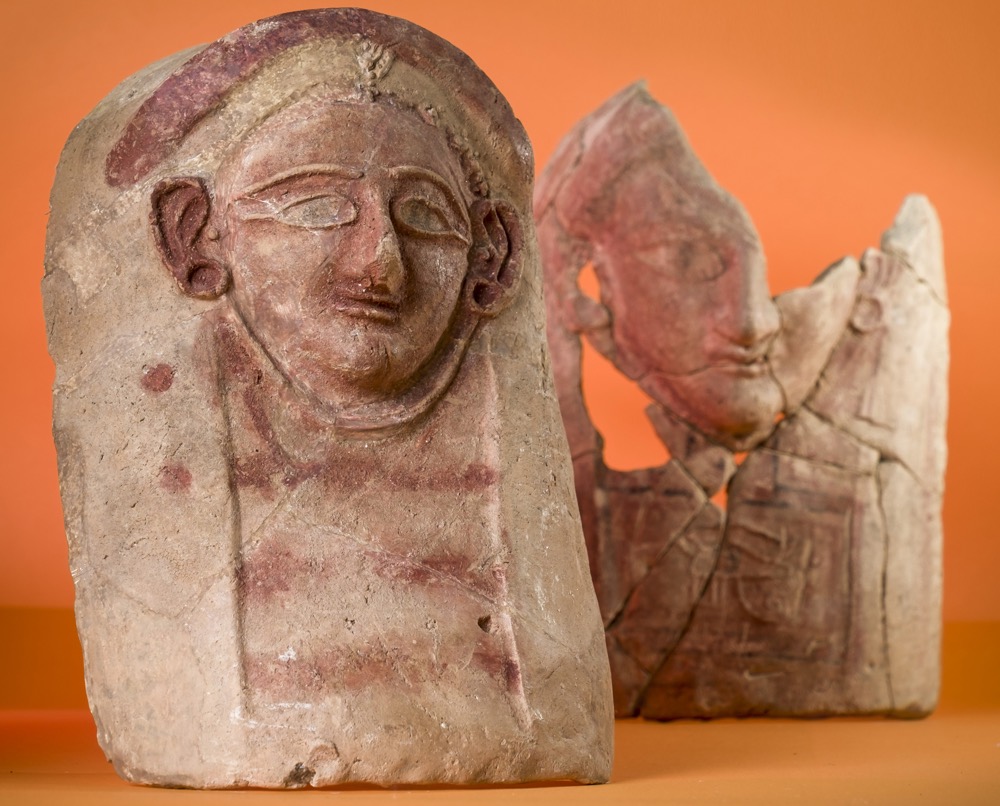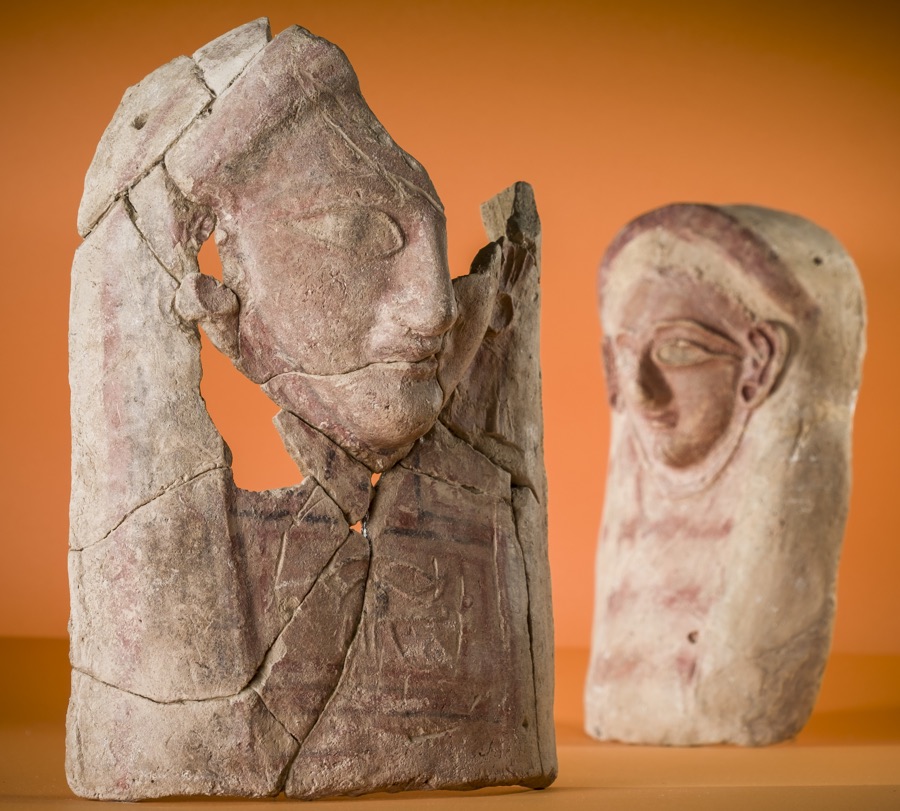Ceramic Heads of Possible Goddesses Discovered in Ancient Waste Dump

The remains of at least four female heads, made out of ceramic, have been discovered at the ancient town of Porphyreon, located in modern-day Jiyeh, Lebanon.
In 2013, a team of archaeologists with the Polish Center of Mediterranean Archaeology discovered a dozen fragments of the ceramic heads, which they say date back about 2,400 years,in what might have been an ancient waste dump that also held bits of pottery, burnt animal bones, and the remains of grapes, olives and chickpeas.
Now, they have restored the pieces into at least four separate heads. [7 Bizarre Ancient Cultures That History Forgot]
The best-preserved ceramic head is about 9 inches (24 centimeters) tall and 6 inches (15 centimeters) wide. It's decorated with red paint and includes a depiction of an ancient headdress known as a stephane, which is a "very specific headdress worn by Greek women," Mariusz Gwiazda, an archaeologist with the Polish Center of Mediterranean Archaeology, wrote in Zeitschrift für Orient-Archäologie (Journal of Oriental Archaeology). One of the other ceramic heads has similar dimensions. Only small portions of the other two ceramic heads have survived.
Three small holes near the top of the well-preserved head were likely used to hang it on a wall, Gwiazda wrote. Fingerprints, which may be those of the artist who made the head, are visible on its surface, he noted. The fingerprints would have been on the clay head before the head was fired.
The four heads were likely "discarded when the walls on which they were hanging were redecorated or reconstructed," Gwiazda said, noting that the ceramic heads may have been in use for a long period of time.
The heads are likely not representations of real people, according to Gwiazda."I believe that these are depictions of deities," he told Live Science in an email. "But it is impossible to prove that without inscriptions or depictions of attributes of specific deities."
Get the world’s most fascinating discoveries delivered straight to your inbox.
Mix of ancient cultures
The four female ceramic heads have a mix of Greek and Phoenician traits, as well as elements of Egyptian origin, Gwiazda said. For instance, one of the heads has a depiction of a Wadjet amulet (a type of amulet that shows an eye) on its breast, Gwiazda said. These amulets were originally used by the ancient Egyptians, who believed that these charms could help protect the wearer from harm. Other cultures later borrowed the Wadjet amulet and its eye symbol, incorporating them into their art and religious beliefs, he said.
While archaeologists cannot be certain exactly where the four heads were made, Gwiazda told Live Science that the team's pottery specialist, Urszula Wicenciak, determined that the clay that was used to make them appears to be from the area around Tyre, an ancient city that is also located in Lebanon.
The four heads were likely created at a time when the Persian Empire controlled a vast amount of territory in the Middle East, a territory that included the ancient town of Porphyreon as well as the area around Tyre, Gwiazdasaid.
Original article on Live Science.

Owen Jarus is a regular contributor to Live Science who writes about archaeology and humans' past. He has also written for The Independent (UK), The Canadian Press (CP) and The Associated Press (AP), among others. Owen has a bachelor of arts degree from the University of Toronto and a journalism degree from Ryerson University.



